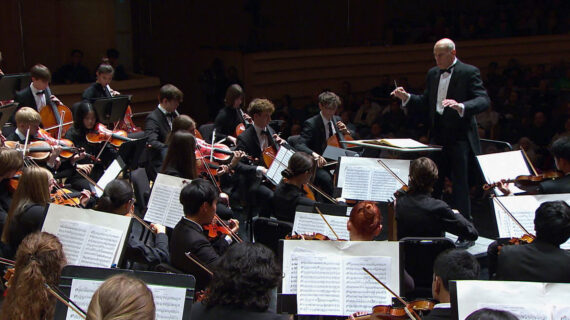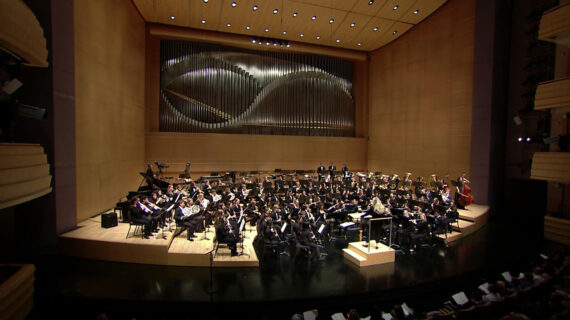Frederica Freyberg:
State Epidemiologist Dr. Ryan Westergaard is helping lead Wisconsin’s response to the pandemic. Dr. Westergaard, thanks a lot for joining us again this week.
Ryan Westergaard:
I’m happy to be here.
Frederica Freyberg:
So what is the situation report in Wisconsin now in terms of spikes in cases?
Ryan Westergaard:
Well, like many areas of the country, we’re seeing a surge or an increase in cases statewide compared to this time about two weeks ago. Our daily case counts are about twice what they were, so 500 to 600 new cases per day during this past week.
Frederica Freyberg:
How alarming is that?
Ryan Westergaard:
Well, I think the big picture is quite alarming. As I’m sure everyone’s aware, there are areas of the country that are seeing large, large surges. The southern states, Florida, Arizona and Texas are seeing pretty dramatic increases. Our current is going in the same bad direction, and it seems to be driven by some of the same factors, which are an increase in close contact at social gatherings, particularly indoors. We’ve learned a lot. That a lot of the clusters that we’re detecting in various areas of the state are driven by close contact in social gatherings and restaurants and bars and so forth.
Frederica Freyberg:
How concerning is that, considering that UW-Madison, for example, is poised to reopen in some fashion to in-person learning?
Ryan Westergaard:
Well, given what we’ve learned about what the epidemic can do, what the virus can do in a population, I would say it’s very concerning that we are on clearly the wrong track. If the virus continues to spread, if the level of — if the level of new cases continues at the pace that it’s on and starts to reflect some of the other areas of the country that are really burning quite hot in terms of new cases, it’s going to translate to a lot of cases and a lot of hospitals — a lot of burden on our hospitals. I think the good news or the reason for optimism is that the other things we’ve learned is that this is a relatively short-lived infection. When people become infected, they don’t stay infected for a long time, within a couple weeks. So that tells us we do have the ability to turn the corner, to shut down these transmission chains, and there’s clearly– evidence now shows that there’s things we can do. So physical distancing and wearing masks in public, if we did this at a high level, we could really turn the corner on this relatively quickly.
Frederica Freyberg:
People might wonder why Wisconsin does not impose a mandate for people to wear masks, as other states have done.
Ryan Westergaard:
Well, that’s a great question. The evidence has become quite strong — and this is a change from just a few months ago, where we were– said with a lot of confidence that masks prevents transmission in health care settings. We’ve known that for years. We didn’t know with a lot of certainty that mask wearing by the general public would really have an impact on transmission in the community. We now know that it does. Recent studies with large numbers of patients in a large number of countries have lead us to have with quite a bit of certainty that wearing masks both protect people from becoming infected and from spreading the infection to other people. So that’s pretty clear. Now this is a little bit my personal perspective is it’s not clear to me that rules and laws are the best ways to encourage people to wear masks. As we’ve seen, there’s a lot of polarization about opinions relating to mask-wearing, so my view as a public health expert, and someone who cares about improving health behavior for the sake of public health and not really in the arena of government and laws, what we really need to lean into is educating people that now, the science is in. That masks are one of the most effective ways to prevent the spread of transmission. People should wear a mask not because they’re concerned they’re going to get a ticket or get arrested if they don’t, but because this is one of the most important things we can do to stay safe and to keep our families safe.
Frederica Freyberg:
It seems that virtually everyone now from public health on up, even to national political figures and officials, are saying to wear a mask, and yet it is so common still to see people not wearing masks when they’re out and about. I mean, as the public health official in the state of Wisconsin, do you ever feel like going up to those people and wagging your finger at them and telling them how important you believe that is?
Ryan Westergaard:
No. I think that’s exactly the wrong approach. I think the approach is to educate and empower. I think we’ve got science on our side. We now know we can– we have hard evidence that the risk of transmission goes down dramatically when people wear masks. So I’m very optimistic. I think it’s a matter of time where that knowledge will be seen as a source of strength and a positive thing. I think people wagging their fingers at each other is entirely the wrong approach. But the fact we have science on our side gives me a lot of hope that we’re going to continue to have a trend toward wider adoption of masks and I encourage people to share that same view when you’re communicating with colleagues and friends and family members about masks. It’s not right or wrong. It’s objectively a really effective way to keep ourselves safe.
Frederica Freyberg:
We touched on this a little bit, but as businesses and schools reopen or prepare to reopen, a lot of people have trepidation about that. Should they?
Ryan Westergaard:
Yeah. I think there’s, again, a lot of things we’ve learned about how to do our essential activities safely. And sending kids to school is an essential activity, just as we talked about. Going to get food and groceries is an essential activity. It’s more challenging because if schools involve a lot of children, a lot of people in close contact, so the challenges are a little– it’s a little more difficult to do this safely. But, again, the data, the science that we’re seeing about the effectiveness of mask-wearing and the importance of distancing, six– two meters, one meter, even three to six feet seems to cut down transmission quite a bit. So I think we’re benefiting from having some time, a lot of science being generated on how to do these essential things safely. And again, frankly, I’m optimistic that we’re going to be able to do schools and gatherings safely in the fall. We just have to adhere to these evidence-based prevention strategies that we’re learning about.
Frederica Freyberg:
Meanwhile we’re coming into a very busy holiday weekend. What is your message to people in Wisconsin?
Ryan Westergaard:
The message is to stay safe. That means to keep yourself safe and keep others in your community safe. And, as we’ve said, there’s simple, everyday activities that people can do to stay safe. If we’re going to get together, if we’re going to gather, outside is better than inside. In all settings, physical distance of at least six feet is critically important at blocking transmission chains. And we can wear masks. They’re simple to take on and off. You can talk and breathe just fine with them. The closer we can get to mask-wearing in public places being the new normal, I think we’re going to have a lot of beneficial effects down– in the fall when respiratory viruses start spreading a little more quickly.
Frederica Freyberg:
Dr. Ryan Westergaard, thank you for checking in with us. We look forward to checking in with you again.
Ryan Westergaard:
Great. Nice talking to you.
Search Episodes
Related Stories from PBS Wisconsin's Blog

Donate to sign up. Activate and sign in to Passport. It's that easy to help PBS Wisconsin serve your community through media that educates, inspires, and entertains.
Make your membership gift today
Only for new users: Activate Passport using your code or email address
Already a member?
Look up my account
Need some help? Go to FAQ or visit PBS Passport Help
Need help accessing PBS Wisconsin anywhere?

Online Access | Platform & Device Access | Cable or Satellite Access | Over-The-Air Access
Visit Access Guide
Need help accessing PBS Wisconsin anywhere?

Visit Our
Live TV Access Guide
Online AccessPlatform & Device Access
Cable or Satellite Access
Over-The-Air Access
Visit Access Guide
 Passport
Passport








Follow Us